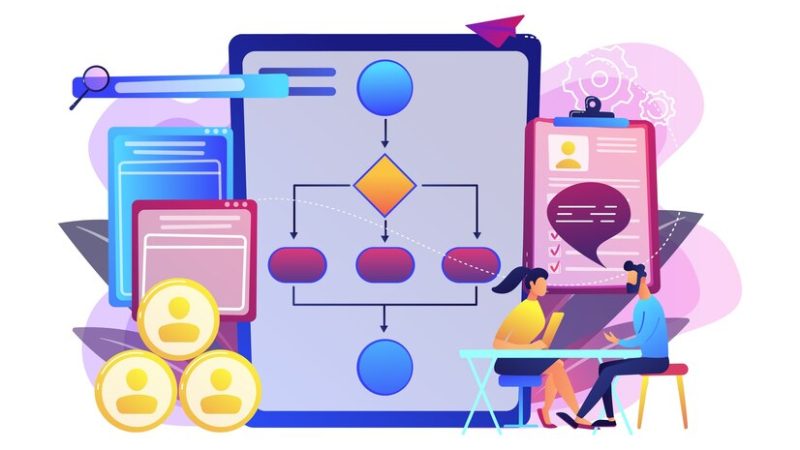In our dynamic world, business analytics’ role cannot be overstated. It stands as a beacon of innovation, steering enterprises towards unprecedented heights. Let us embark on an enlightening journey to unravel the intricacies of business analytics, a tool reshaping the business landscape as we know it.
Importance of Business Analytics in the Modern Business Environment
In the dynamic business environment, business analytics acts as a beacon, guiding organizations to success amidst a data surge. This powerful tool transforms raw data into actionable insights, helping companies anticipate market trends and understand consumer behaviors. As a vital catalyst in today’s business world, it enables quick adaptation to changing market dynamics, ensuring organizational resilience. By leveraging business analytics, companies can develop innovative strategies and maintain a competitive edge, paving the way for a data-driven and prosperous future.
This article discovers the secrets of business analytics, offering a beacon of knowledge for aspiring professionals and entrepreneurs alike.
Evolution of Business Analytics
The evolution of business analytics showcases the progressive journey from basic statistical analyses to a refined discipline leveraging big data, artificial intelligence, and machine learning. This transformation, marked by a shift from simple data collection to intricate analysis and predictive modeling, empowers businesses to decipher past and current trends and accurately anticipate future developments. As we enter a new phase, business analytics stands poised to further revolutionize business strategies and operations with insightful, data-driven solutions.
The Role of Business Analytics in the Information Age
In the information age, business analytics has become a vital linchpin, synthesizing many data into actionable insights. It aids organizations in navigating the intricate and fluid business terrain, providing a data-driven roadmap to understand market dynamics and customer preferences more deeply. Serving as a guiding compass, it steers businesses towards sustainable growth and innovation, helping them to swiftly adapt strategies and maintain a competitive edge in a world where information is a key resource and agent of change.
Understanding Business Analytics
Understanding business analytics is like mastering the navigation through the intricate maze of contemporary business environments. It entails utilizing various methodologies to transform data into valuable insights that shape strategic decisions. Central to this is the detailed analysis of data to pinpoint patterns and opportunities. This vibrant field integrates diverse forms of analytics to offer a comprehensive perspective on business performance and avenues for success, as detailed in the Business Analytics Essentials, fostering data-driven decision-making and a lasting competitive edge.
Types of Business Analytics
- Descriptive Analytics: This initial phase of business analytics focuses on analyzing historical data to comprehend past business events. It aids in recognizing patterns and trends, giving a concise overview of the business scenario during a specific timeframe. Utilizing data aggregation and mining techniques, it furnishes insights into the past, setting the foundation for advanced analytical procedures.
- Diagnostic Analytics: Advancing beyond descriptive analytics, diagnostic analytics delves deeper to identify the causes behind past business results. Leveraging techniques like drill-down and data mining, it pinpoints the reasons for specific events. This analytics form is vital in discerning the fundamental factors affecting business performance, aiding in developing informed strategies.
- Predictive Analytics: Utilizing statistical algorithms and machine learning, predictive analytics anticipates future trends using historical and current data. This approach aids businesses in foreseeing potential events, facilitating timely preparation and strategy formulation. Consequently, companies can maintain a competitive edge by identifying opportunities and risks before they emerge.
- Prescriptive Analytics: Prescriptive analytics, the pinnacle of analytical forms, forecasts future outcomes and proposes beneficial actions to influence those results. Leveraging optimization and simulation algorithms, it guides navigating potential future events. This analytics type is central to decision-making, directing businesses towards the best strategies and solutions to meet their goals.
Tools and Techniques
- Data Mining: Data mining involves extracting valuable information from large datasets to discover patterns and trends. This process helps businesses make informed decisions by providing insights from analyzing complex data structures.
- Data Warehousing: Data warehousing is storing and managing large volumes of data in a centralized system, facilitating easy access and analysis. It is a repository that consolidates data from various sources, enabling businesses to generate comprehensive reports and insights.
- Statistical Analysis: Statistical analysis is the application of statistical techniques to analyze and interpret data, helping to identify significant patterns and insights. It guides in making informed business decisions by providing a quantitative basis to evaluate different business phenomena.
- Predictive Modeling: Predictive modeling utilizes statistical algorithms and machine learning methods to analyze historical data and predict future outcomes. This approach helps businesses strategize and prepare for future events, allowing them to stay ahead in the competitive market.
Implementing Business Analytics
- Steps to Implement Business Analytics
Implementing business analytics involves a structured approach that begins with identifying clear objectives and gathering relevant data, then selecting appropriate analytical tools and techniques. It is crucial to analyze the data meticulously to derive actionable insights, which should be integrated seamlessly into business strategies to drive informed decisions and achieve organizational goals.
- Choosing the Right Tools and Software
Choosing the right tools and software for business analytics is a critical step that entails evaluating the specific needs of a business and selecting solutions that align with its goals and operational dynamics. It involves carefully considering factors such as ease of use, scalability, and integration capabilities to ensure a seamless and efficient analytical process that fosters data-driven decision-making.
- Gathering and Cleaning Data
Gathering and cleaning data is a fundamental step in the analytics process, where data from various sources is collected, and inconsistencies, duplicates, and errors are removed to ensure accuracy and reliability. This phase is vital as it lays the groundwork for meaningful analysis, helping businesses to derive actionable insights from a pristine and well-organized dataset.
- Analyzing Data and Generating Insights
Analyzing data and generating insights is a pivotal phase in business analytics, where collected data is scrutinized to identify patterns, trends, and potential opportunities. This process, often facilitated by sophisticated analytical tools, enables organizations to make informed decisions, fostering innovation and driving business growth through data-driven strategies.
Challenges and Solutions
- Data Privacy and Security
Data privacy and security are paramount in protecting sensitive information from unauthorized access and breaches. Implementing robust security measures ensures the confidentiality and integrity of data, fostering trust with stakeholders and complying with legal regulations.
- Data Quality and Consistency
Maintaining data quality and consistency is crucial for accurate analysis and decision-making. It involves the regular cleaning and validation of data to ensure reliability and uniformity, supporting the development of effective business strategies.
- Skill Gap and Training
The skill gap and training refer to the discrepancy between the existing skills within an organization and the necessary skills to leverage business analytics effectively. Addressing this gap through targeted training programs, like online data science course, can enhance employees’ proficiency in handling analytical tools and techniques, fostering a culture of data-driven decision-making.
- Integrating Analytics into Business Strategy
Integrating analytics into business strategy involves incorporating data-driven insights into decision-making to guide business objectives and goals. This integration allows for more informed and strategic planning, facilitating optimized operations and a competitive edge in the market.
Future Trends
- Artificial Intelligence and Machine Learning
Artificial Intelligence (AI) and Machine Learning (ML) are revolutionary technologies that empower businesses to precisely automate processes and analyze complex data sets. These technologies facilitate predictive analytics, helping organizations to anticipate trends and make data-driven decisions.
- Big Data and the Internet of Things
Big Data defines the massive volume of data generated every second, while the Internet of Things (IoT) involves interconnected devices that communicate and share data. Together, they create a rich ecosystem of data sources, providing businesses with unprecedented opportunities to glean insights and optimize operations.
- Real-time Analytics
Real-time analytics involves the instantaneous processing and analysis of data as it is generated, allowing businesses to make informed decisions swiftly. This approach enhances responsiveness and agility, enabling organizations to promptly adapt to changing market conditions and customer preferences.
- Augmented Analytics
Augmented analytics leverages AI and ML to automate data preparation and analysis, making the process of generating insights more efficient and accessible. This form of analytics assists in uncovering hidden patterns and insights, facilitating more informed and strategic business decisions.
Conclusion
As we stand on the threshold of a new era, the future of business analytics unfolds like an expansive horizon, teeming with untapped potential and burgeoning opportunities. This dynamic realm beckons the visionaries and pioneers of tomorrow to delve deep and explore its rich tapestry woven with data-driven insights and innovative strategies. The forward-thinkers who dare to venture into this territory are poised to unlock unprecedented growth, efficiency, and innovation avenues. By harnessing the transformative power of business analytics, they stand to redefine the paradigms of business operations, carving out pathways that lead to sustainable success and a prosperous future. This vibrant landscape of business analytics promises to shape tomorrow’s leaders and sculpt a world where data serves as the cornerstone of informed and visionary decision-making.








